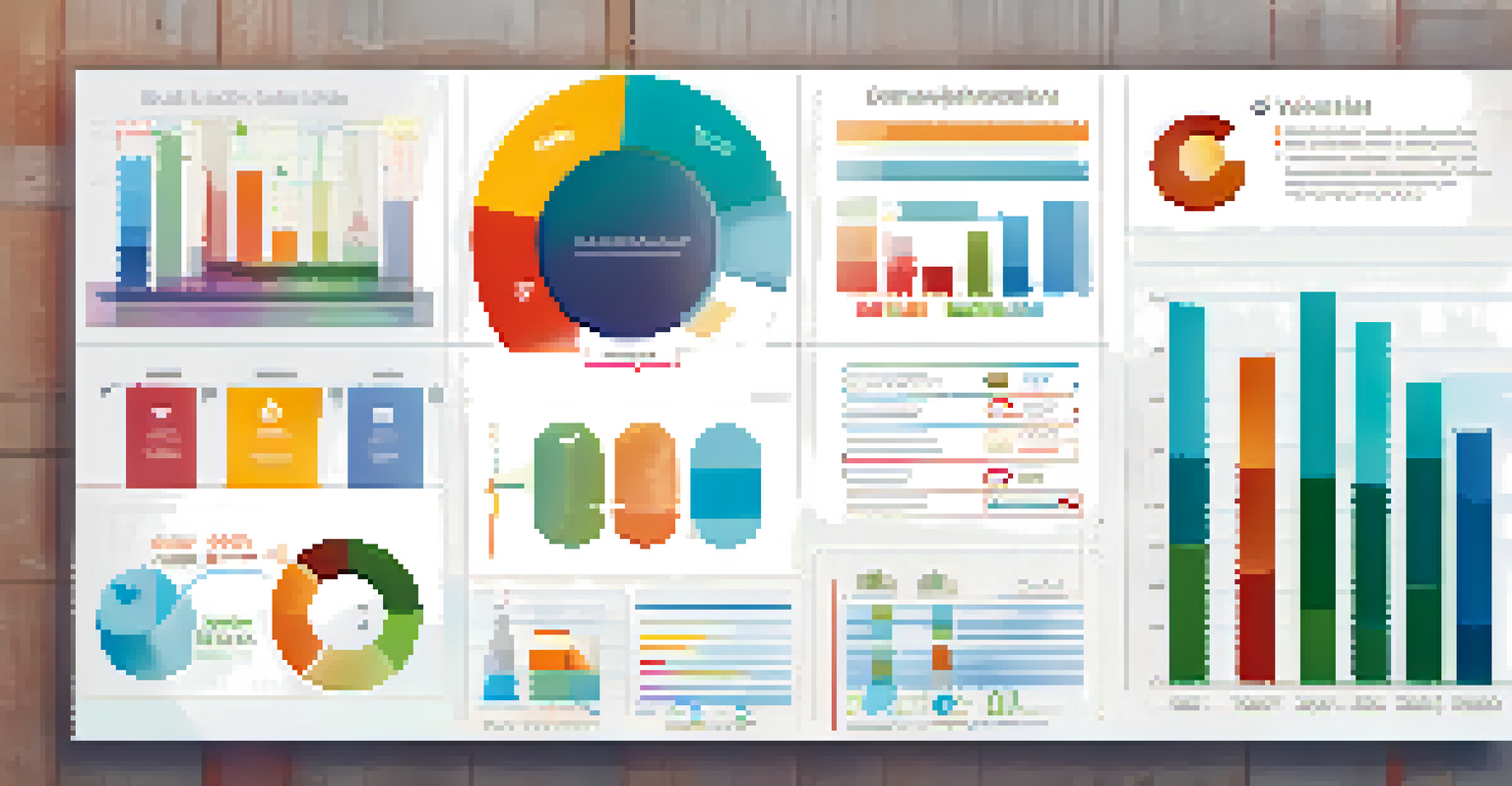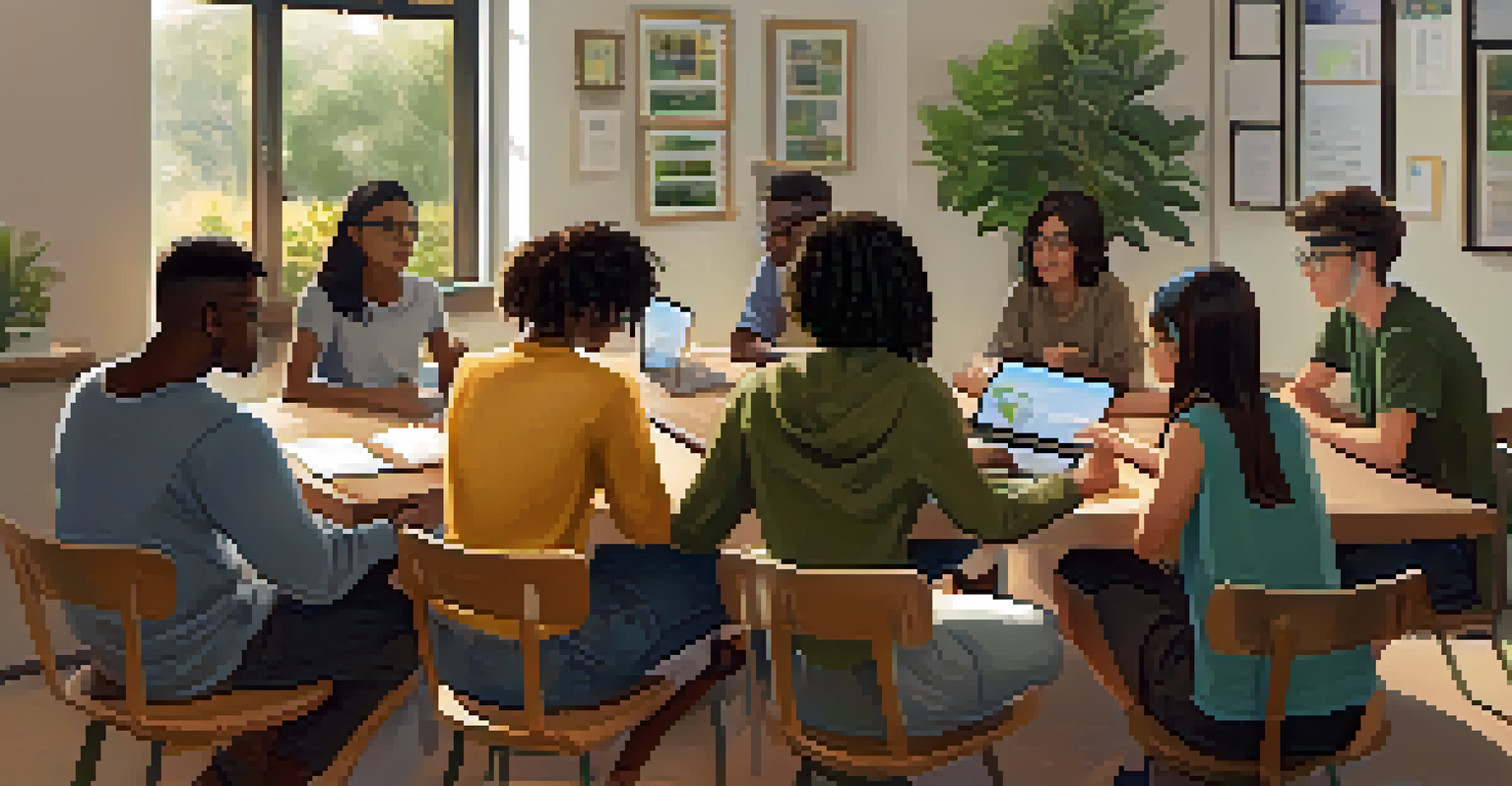Creating Engaging Multimedia Content for Online Learning

Understanding the Importance of Multimedia in Learning
Multimedia content combines various formats like text, images, audio, and video to enhance learning. This blend caters to different learning styles, making it easier for students to grasp complex concepts. For instance, a visual learner may benefit more from an infographic than a lengthy article.
Multimedia is not just a tool; it is a catalyst for learning that engages students in ways that traditional methods often cannot.
By integrating multimedia, educators can create a richer and more interactive experience. It not only engages students but also helps in retaining information more effectively. Imagine trying to remember facts about the solar system through a static image versus an animated video.
Ultimately, the goal is to create a dynamic learning environment where students feel motivated to explore and learn. Effective multimedia content can transform a mundane lesson into an exciting journey of discovery.
Choosing the Right Tools for Multimedia Creation
Selecting the right tools is crucial in crafting engaging multimedia content. There are numerous platforms available, each with its unique features and benefits. For example, tools like Canva and Adobe Spark are excellent for creating stunning graphics and presentations.

For video creation, applications like Camtasia or Adobe Premiere Pro can help you produce high-quality content. These tools allow you to edit videos, add effects, and incorporate audio, making your lessons more compelling. Think of them as your digital canvas where you can paint your ideas.
Multimedia Enhances Learning
Integrating various formats like text, images, and videos caters to different learning styles, making complex concepts easier to understand.
Don’t forget about accessibility; it's essential to choose tools that allow you to create content that’s inclusive for all learners. Ensuring your multimedia is accessible can make a world of difference in how effectively it serves its educational purpose.
Incorporating Interactive Elements for Engagement
Interactive elements can significantly enhance learner engagement and retention. Features like quizzes, polls, and clickable infographics invite students to actively participate rather than passively consume content. This active involvement helps students to better internalize the material.
The art of storytelling is the most powerful way to put ideas into the world today.
For example, consider using platforms like Kahoot! or Quizizz for real-time quizzes during your lessons. These tools not only make learning fun but also encourage friendly competition among students. It's like turning a boring lecture into an exciting game that everyone wants to play.
By weaving interactive elements into your multimedia content, you're not just teaching; you're creating an experience that resonates with students. This can lead to deeper understanding and a more fulfilling educational journey.
Storytelling: The Heart of Engaging Multimedia Content
At the core of compelling multimedia content lies the art of storytelling. A well-crafted narrative can make complex subjects more relatable and memorable. For instance, sharing a personal anecdote about learning a challenging topic can create a connection with your audience.
When students can see themselves in the story, they're more likely to engage with the material. Think of storytelling as the thread that weaves together various multimedia elements, creating a cohesive and captivating learning experience.
Interactive Elements Boost Engagement
Incorporating quizzes and polls invites active student participation, transforming lessons into engaging experiences.
Incorporating storytelling into your lessons can turn information into inspiration. It encourages students to think critically and relate to the content on a personal level, making learning not just informative, but transformative.
Utilizing Visuals to Simplify Complex Information
Visuals play a pivotal role in simplifying complex information. Charts, graphs, and diagrams can distill large amounts of data into easily digestible formats. For example, a complex statistical report can become clearer through a well-designed chart that highlights key trends.
Incorporating visuals into your multimedia content can provide clarity and enhance understanding. They serve as quick reference points that students can easily recall, making them invaluable in the learning process.
By effectively using visuals, you can help students make connections between concepts, fostering a deeper understanding. It's like having a roadmap that guides them through the terrain of information.
Ensuring Accessibility for Diverse Learners
Creating accessible multimedia content is essential for reaching diverse learners. This means considering different abilities and learning styles when designing your materials. For instance, providing captions for videos and alt text for images ensures that everyone can benefit from your content.
Accessibility isn't just a checkbox; it enriches the learning experience for all students. By being mindful of accessibility, you invite a broader audience into the learning space, enhancing collaboration and community.
Accessibility is Key for Inclusion
Designing multimedia content with accessibility in mind ensures that all learners can benefit, fostering a more equitable educational environment.
When students feel included, they're more likely to engage and participate actively. Ensuring your content is accessible can create a more equitable learning environment where everyone has the opportunity to succeed.
Evaluating the Effectiveness of Your Multimedia Content
Once you’ve created your multimedia content, it's vital to evaluate its effectiveness. Gathering feedback from students can provide insights into what works well and what needs improvement. Consider using surveys or informal check-ins to gauge their understanding and engagement.
Additionally, analyzing metrics like completion rates and participation can help you assess how well your content meets learning objectives. It’s like taking a pulse on your educational efforts to see where adjustments are needed.

Ultimately, continuous improvement is key to creating impactful multimedia content. By regularly evaluating and refining your materials, you can ensure they remain relevant and effective for your learners.